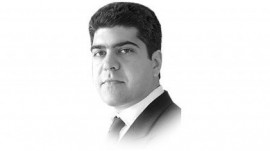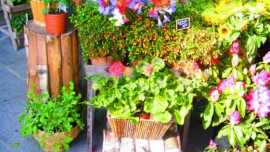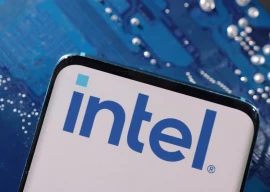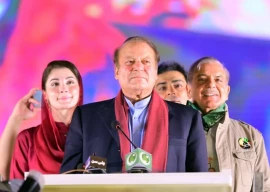
Berlin’s partition was concretised on August 13, 1961. Neighbours woke up to find barbed-wire fences, and the Wall constructed overnight and in great haste — mistries became sentries. The wall twisted and turned, down alleys and across boulevards — a desolate space was carved into the heart of the city — at Potsdamer Platz — to negotiate the divisions elsewhere. Berlin’s partition immediately made Berlin the global symbol of the Cold War — the ultimate custody battle between two former lovers — and the Wall became its most potent symbol. Anyone remember that last scene of John Le Carré’s 1963 novel The Spy Who Came in from the Cold?
The Wall is now great tourist business in Berlin. Millions come to this city to trace its pathways, to see this ‘relic’. Berlin today is a city built for such historical tourism after 1989. The Brandenburg Gate, the Reichstag, the Victory Column, the steel and glass facades ringing Potsdamer Platz — are all awe-inspiring. They demand your eyes and your point-and-shoots. The Memorial to the Murdered Jews of Europe, near the Brandenburg Gate, cements Berlin’s own vanished onto the city topography. This too draws the tourist gaze. Point, click, view.
At most sites, Berlin produces pithy tri-lingual posters which give historical context to the site, the landmark. It is Berlin’s way of framing history more securely into the narrative thread of a rejuvenated city, embracing its past and hurtling towards its future.
Berlin is a medieval city and Nikolai Quarters is considered the heart of medieval Berlin — with the St. Nikolai Church attracting tourists to its fourteenth century roots. Except it is brand-new, historically speaking. Only traces of this neighborhood and the Church remained when in 1979 the East German authorities decided to rebuild the area and restore its ‘medieval’ look — planned from scratch by the architect Günter Stahn. Perhaps the current day visitor knows of this new medieval, but most don’t care that this made-over, re-fabricated, re-imagined. The 13th century in the heart of Mitte, as imagined by the East German state is now consumed by the global tourist.
I asked my friend, urban historian Dr Nikhil Rao about Berlin’s many constructions. He was my earliest guide to this city and Berlin through his eyes is rich fabric I can barely comprehend. “Few cities get to re-invent themselves within the space of 60 years,” he told me. “Fewer still get to do so twice in the same period. No city has done it three times in 60 years as Berlin has. The physical and social faces of Berlin were transformed first in the destruction of the Nazi era and World War II, followed by the rebuilding of two Berlins in the Cold War era. Each Berlin sought to project its distinct ideology onto the world in its respective re-building. With the fall of the Berlin Wall and the end of the Cold War, the unified Berlin re-built itself yet again, seeking to become emblematic of the post Cold War world order.”
But not all of Berlin is re-constructed. The city leaves some old cobwebs in the corner. I have been having fun trying to find them. In one south-western edge of the Tiergarten, which is a very large forest preservation in the heart of the city, there lies an abandoned base. At some point maybe a statue stood here — but now it is just two bits of steel poking the sky, with bullet holes pock-marking the base. I like this base, a lot, a reminder of some unfinished business of history-writing.
In another park, the Prussian Park, is another statue. This one of the spirit of Prussia, called Borussia, created by the sculptor whose work dots all of Berlin, Reinhold Begas. This one sits in a park which is now known for its Thai food and drinks — a truly unique experience of the new Berlin.
But statues, or missing statues, make poor stand-ins for any city. To feel the pulse, you have to wander past the memorials into the streets where people live, work, play. This is one of my favourite things to do in Berlin — to ride the ever-ready U-bahn to some node, and walk.
It was one such walk — very early in my still-young tenure in Berlin that I encountered Lahore, for the first time. A few blocks from my house, in the leafy neighbourhood of Wilmersdorf, I stumbled across a minaret lit by the sun and framed by the blue sky. I was surprised to see it in this area — the Muslim, largely Turkic- populations live far to the east. But walking up to the gate, I saw a simple column rested into concrete. Built 1924-1927 by the Jamaat Ahmadiyya, Lahore.
Since then, Lahore is never far from my Berlin. Like Berlin, Lahore has a vanished population, as well. Those who left in August, in September, in October, in November. Those who continued to hope that the Partition wasn’t a partition. The borders fell outside of the city but the people inside were divided nonetheless. In Berlin, there are memorials to the departed, embedded into the stone-street — Here lived Sara Schwersene (born Jacobowski, 1871). Deported 23.9.1942. Murdered in Auschwitz.
I try to imagine Lahore’s neighbourhoods divided as well — maybe the Mall Road would have served as the natural barrier, or maybe the Canal? Such a partition of Lahore never happened in concrete but it did happen. Large parts of Lahore vanished — they left. Their houses were filled with the new residents, their streets were re-named. That Lahore vanished and left only vague, cursory traces that it ever, even existed. But no names.
Published in The Express Tribune, July 24th,2010.


























1714024018-0/ModiLara-(1)1714024018-0-270x192.webp)









COMMENTS
Comments are moderated and generally will be posted if they are on-topic and not abusive.
For more information, please see our Comments FAQ